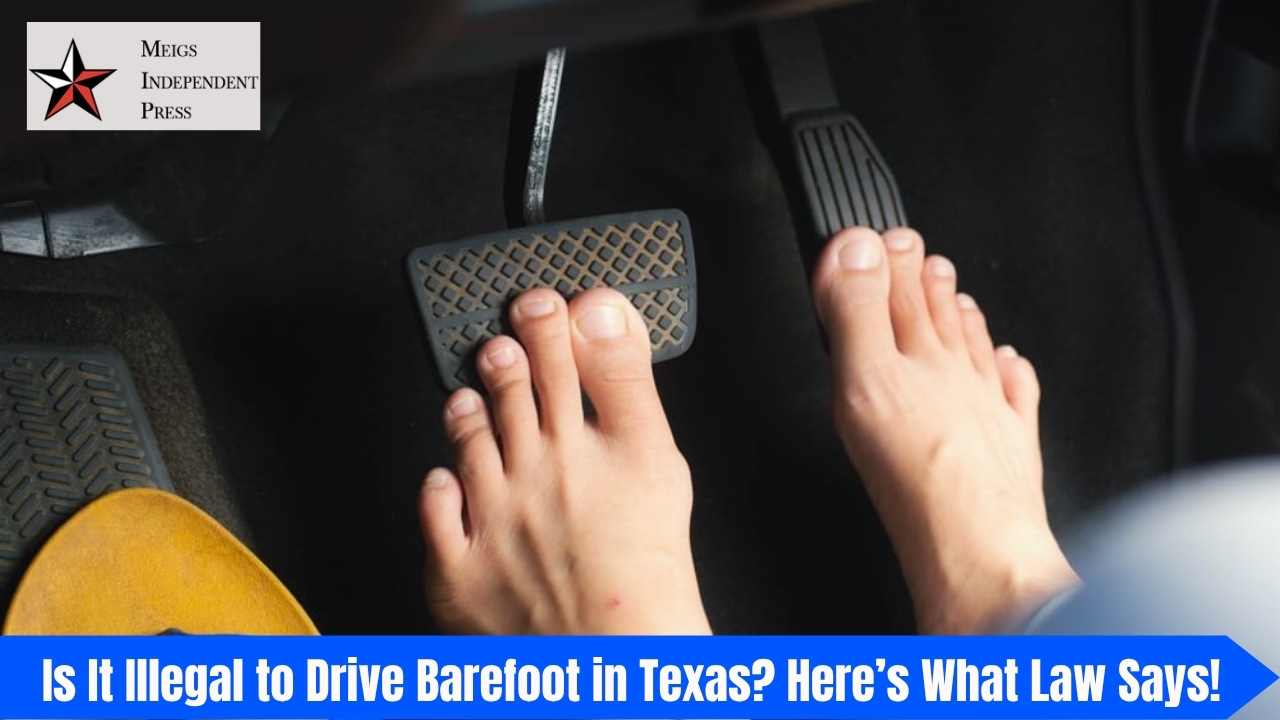The Lone Star State is famous for its independent spirit, its vast highways, and its seemingly endless list of local legends—and one of the most enduring myths in Texas is the supposed illegality of driving barefoot. It’s a question that surfaces nearly every summer, as the heat rises and drivers long for comfort: Will a police officer pull me over and issue a citation for operating my vehicle without shoes?
What the law says
Texas has no statute requiring footwear for drivers, and driving without shoes is legal at the state level, despite persistent myths that say otherwise. Multiple Texas law resources affirm that a driver will not receive a ticket solely for being barefoot, though unsafe control can still lead to enforcement under other laws if observed. The Texas Driver Handbook does not impose a footwear requirement, and practitioner summaries often note its silence on barefoot driving, reinforcing that no specific ban exists in state rules.
Why the myth persists
The barefoot driving myth is longstanding and often tied to general safety concerns and cultural assumptions rather than explicit statutes, which has led many to believe it’s banned when it is not. Texas attorneys and traffic safety explainers repeatedly clarify that all 50 states permit barefoot driving, with no evidence of a state-level prohibition in Texas or elsewhere.
Safety vs. legality
While legal, barefoot driving raises practical safety questions like reduced traction on pedals if feet are wet or sweaty and exposure to debris in a crash, which can impair control and increase injury risk. Some footwear can be riskier than bare feet; flip-flops can slip or jam under pedals, and thick soles or high heels can dull pedal feel and delay reactions. Safety educators recommend footwear that is secured to the foot, with flat soles and good grip, to help maintain consistent pedal control and force application.
When it can lead to a ticket
Texas Transportation Code §545.401 makes reckless driving a misdemeanor when a driver operates with willful or wanton disregard for safety, punishable by up to a $200 fine, up to 30 days in jail, or both, and it applies on public roads and many private access ways. Barefoot driving alone is not reckless, but if loss of control due to footwear choice results in dangerous behavior or a crash, an officer could cite the broader safety statute rather than footwear itself. Insurers and opposing parties may scrutinize footwear in crash disputes to argue negligence or reduced control, even when no footwear law was violated.
Research and key statistics
Pedal misapplication—pressing the wrong pedal or slipping—contributes to thousands of collisions each year in the United States, with a transportation research summary citing about 16,000 such crashes annually attributed to pedal errors in NHTSA analyses. Older adults show higher pedal misapplication rates after interruptions, underscoring how momentary distractions or compromised control can compound risk regardless of footwear legality. Separately, distracted driving claimed 3,275 lives in 2023, and actions like adjusting shoes or retrieving fallen footwear can add to distraction even if they’re not illegal per se.
Footwear that helps or hurts
Flat, thin, grippy soles that are securely attached generally support consistent pedal feel and control, aligning with driver safety coaching and injury-prevention guidance referenced by Texas practitioners. Flip-flops meaningfully increase initial braking times and are associated with missed or slipped pedal contacts in testing, which can lengthen stopping distance in surprise braking scenarios. Bulky boots and high heels can reduce tactile feedback or catch on adjacent surfaces, delaying precise pedal transitions critical in emergencies.
Local rules and edge cases
Statewide, Texas imposes no barefoot ban for drivers, but municipalities can pass ordinances on various subjects; practitioners therefore advise checking local rules even though city-level bans on barefoot driving are uncommon in practice. Related footwear topics, such as motorcycle gear requirements in other states, do not change the legality of barefoot car driving in Texas, which remains permitted under state law.
Practical tips for safer control
Keep a dedicated pair of secure, flat-soled driving shoes in the vehicle to avoid operating pedals with bare feet or unstable footwear when conditions (like wet feet) reduce traction. Clear the driver footwell of loose items that could lodge beneath a pedal and maintain clean, dry pedal surfaces to lower the risk of slips or obstructions. If wearing footwear with poor grip or unstable fit, remove it and switch to safer shoes before driving, rather than adjusting footwear while the vehicle is in motion.
Insurance and liability considerations
Even though barefoot driving is legal, post-crash investigations may examine whether footwear contributed to reaction delays or pedal errors, potentially influencing negligence arguments and claim outcomes. Documentation that demonstrates safe control—such as witness statements or vehicle data—can help clarify that footwear did not cause the incident when legality is not at issue.
FAQs
Is it illegal to drive barefoot in Texas?
No, Texas has no statute prohibiting barefoot driving, and this aligns with the nationwide picture that none of the 50 states ban it.
Can an officer write a ticket just for being barefoot?
Not as a standalone violation, but unsafe control arising from footwear choice can be cited under general safety statutes like reckless driving if behavior meets the legal threshold.
Does the Texas Driver Handbook ban barefoot driving?
The handbook does not impose a footwear rule, and practitioner summaries emphasize the absence of any such requirement.
Bottom line
Driving barefoot in Texas is legal, but the safer course is footwear that stays on the foot and provides consistent, grippy pedal contact to reduce slip and misapplication risk. If footwear or bare feet compromise control and create danger, enforcement can occur under general safety laws even in the absence of a footwear-specific statute.











Leave a Comment